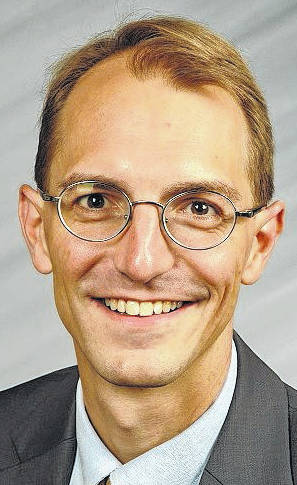
“Beyond my expectation, through uncontrollable factors, this scientific investigation became for practical purposes a Frankenstein’s monster.”
— John Larson, polygraph inventor
“A lie which is all a lie may be met and fought with outright, But a lie which is part a truth is a harder matter to fight.”
— Alfred, Lord Tennyson, 1809-1892
Whether it’s Wonder Woman’s lasso of truth, a Harry Potter spell that allows its caster to read minds, or whatever magic forced Jim Carrey to tell the truth in “Liar Liar,” fictional entertainment has always embodied our desire to find a fool-proof way to tell the truth from a lie.
In real life, polygraphs are the most frequently used technological method to attempt to detect lies. They are used by law enforcement in the course of investigations and by employers as a personnel management tool. They are now most often computerized and have no rolling paper feed or squiggling stylus like you see in the movies. Polygraphs have been in use for nearly a century, and although the technology has changed, the theory behind the examination is the same. It is believed that when a person lies, the subconscious causes certain physiological responses that can be measured and compared against times when the person is not lying.
The test measures four physiological responses. First, it measures blood pressure through the use of a pressure cuff. Second, it measures heart rate with a pulse meter. Third, it measures respiration, often through the use of a belt-like device that straps around the subject’s chest. Finally, the polygraph measures galvanic skin response, also known as skin conductivity. This is a measure of how well a small electrical current is conducted between two points (usually two fingers or two spots on the palms of the hand). It is essentially a test of sweat gland activity and changes in the sympathetic nervous system.
Despite this seemingly scientific basis, results of polygraph examinations are generally not admissible in court. Various statistical reviews of polygraph examinations have shown them to be accurate anywhere from 70-90% of the time, and a National Academy of Sciences review of literature concluded that while polygraphs could detect lies at a rate “well above chance,” their success rates were almost certainly overstated in controlled studies.
The rules that govern the admissibility of scientific evidence in court require that the test be scientifically reliable and that there be general agreement in the scientific community as to the reliability of the tests. Courts of appeals have nearly universally held that polygraph examinations do not meet these tests. As a result, polygraphs are used in criminal cases in other ways. They can be rendered admissible if the parties agree before the test that results will be allowed in court. This stipulation must be made in writing, in front of the judge presiding over the case. Often, a plea arrangement has been worked out in advance — an arrangement in which the defendant will plead guilty to a particular offense if the polygraph shows deception and the charge will be reduced or dismissed if the polygraph shows no signs of deception.
A recent review in the British newspaper The Guardian, examined emerging technologies that might replace the polygraph, and might even one day bring about the realization of the hope of conclusively detecting truth from lies.
Among those technologies are attempts to read eye movements, brain waves, word choices, and even AI that combines multiple methods. While the potential of those technologies is exciting, they pose several questions that are more philosophical than scientific. How would the justice system react to a tool that could tell the truth with the efficiency of Wonder Woman’s lasso? What would be the potential for misuse or abuse of foolproof lie detection tests? And most broadly, how would our day-to-day societal interactions be altered if we always knew that little white lies and pleasant niceties we share in conversation weren’t genuine?
In my experience nearly two decades ago as an assistant prosecuting attorney, I had the privilege to witness the administration of approximately a dozen polygraph examinations at the Ohio Bureau of Criminal Identification and Investigation office in London. The process was truly fascinating to watch, although juries almost never saw the results. Those days might be changing, even if Wonder Woman has nothing to do with it.


